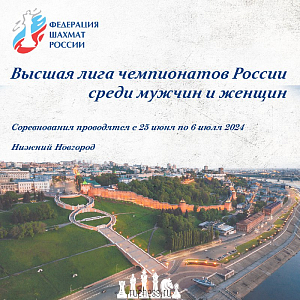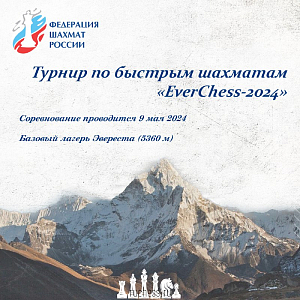Kramnik's Lessons and Aronian's Misfire
Vladimir Barsky reports from Berlin about round five of the Candidates Tournament
Round five has seen no blood drawn as all four games ended peacefully. Three of them proceeded uneventfully, but the fourth can be rated as the most confusing in the entire tournament.
The game Fabiano Caruana - Sergey Karjakin was over very quickly, within an hour and a half. Black successfully carried out a typical breakthrough c6-c5 in the Catalan opening, winning back a sacrificed pawn and completely equalizing after a series of trades. The world vice-champion did not hide his satisfaction: "At last I managed to recall my home prep and avoid making a mess of anything!" On the other hand, a short draw as White was obviously not too much of an upset for the tournament leader. "I am glad that today I managed to channel the game into still bays, in which the opponent has had no passers whatsoever!" – admitted Caruana. Indeed, two previous games developed much more dramatically for the American grandmaster: he was either facing Mamedyarov's pair of passers, or Kramnik's phalanx of as many as four. In these games, Caruana scored one and a half points out of two, but it was a nail-biting experience of balancing on thin ice for sure. So, this little respite is just in time.
Caruana - Karjakin
1. d4 Nf6 2. c4 e6 3. g3 d5 4. Bg2 Be7 5. Nf3 0-0 6. Qb3 c6 7. 0-0 dxc4 8. Qxc4 b5 9. Qc2 Bb7 10. Nbd2

10…c5!
A strong novelty that allows Black to equalize completely.
11. dxc5 Na6 12. Nb3 Be4 13. Qc3 Rc8 14. Be3 Nd5 15. Qd2 Bxf3 16. Bxf3 Nxe3 17. Qxe3 Nxc5 18. Nxc5
An important subtlety was noted by Sergey during the press conference: 18. Nd4 (White is willing to keep the knights from trading to plant its own on с6) does not work because of 18…Bg5! 19. Qc3 Na4, etc.
18... Bxc5 19. Qb3 Qb6 20. e3 Be7 21. Rfd1 Rc7 22. Rac1 Rfc8 23. Rxc7 Rxc7 24. Kg2 g6 25. Rd2 Kg7 26. Rc2 Rxc2 27. Qxc2 Qc5 28. Qxc5 Bxc5 29. b3 f5 30. a4 bxa4 31. bxa4 Draw.
Another Catalan was seen in the game Ding Liren - Shakhriyar Mamedyarov; it also petered out into a fairly tranquil draw. Earlier in this tournament, two "black" games of Shah’s were very aggressive, but this time he failed to initiate a big melee and had to put up with an equal position. It's too premature to burn bridges with two-thirds of the tournament ahead yet. The Chinese grandmaster prepared a new plan for this game and got a promising position, but did not want to take any risks and offered a draw on move 31. According to Mamedyarov, he saw no plan of active play for himself, and, therefore, had no grounds for refusal. However, he found a promising maneuver for White, which escaped Ding's attention, the knight’s transfer to c4. There can be little doubt that if Shah were to be in charge of the white pieces in the final position, he would have continued pressing for quite a time yet.
Ding Liren – Mamedyarov

Black on move The knight’s transfer to c4 is really unpleasant, but Black can prevent it: 31…Qc5!, and if 32.Qb2 (to unpin the knight), then 32…Qe5! Whatever the reason, Ding Liren preferred to offer a draw without any delay.
Levon Aronian and Alexander Grischuk have turned their game into a real action. As the commentators of the popular German site Chess24.com joked, the grandmasters decided to prove that the Kramnik-Caruana game, played the day before, was tranquil and smooth. If compared with their battle, of course.
The opponents opened the game into the so-called Anti-Grünfeld - a fairly popular system at the highest level, which has not been studied far and wide so far. Aronian uncorked a novelty on move 11 - too early by modern standards. Grischuk chose a very principled continuation in response, but it is unclear how deeply he had it analyzed at home. It seems as if it was not above bluff after all, because Black’s position was a subject of serious misgivings before long. Aronian carried out a typical central pawn break, upon which his pieces started to make inroads into the enemy camp. The computer shows a forced victory for White on move 24, but humanly it was almost impossible to find it as it has to do with too complicated calculations and evaluations of arising positions. Levon opted for a different path, which somehow allowed Black to escape in one piece. However, at this moment Grischuk got into a severe time trouble, so habitual for himself.
I have often heard that Grischuk's play is not affected by time trouble, and he is capable of coming up with the strongest moves on hanging flags. It is so indeed, but not always: intuition is intuition, but calculation of lines is as necessary as ever. On move 24 Grischuk found a brilliant defensive resource, but three moves later he committed a blunder, which gave White a choice of several winning continuations. Despite having given the position a thought of some 10-15 minutes, Levon opted for a different path.
"There is no missing such opportunities in the Candidates tournament!" – the Armenian grandmaster became sad as he delivered this statement of self-criticism at the press conference. The first path was very difficult (although Peter Svidler, commenting on Chess24, managed to spot it), the second was much simpler - Grischuk managed to calculate it while Aronian was thinking his move over. The third alternative was found by Levon himself, but he thought that there should be something shorter and clearer. And he ended up miscalculating.
Aronian spared the undefended c8-bishop en prise, which surprisingly put Black back in the game: not only did his pieces were out of the wood, but he altogether switched to creating serious threats to the white king. "I thought I was already winning," admitted Grischuk. – This feeling probably materialized against the background of a very bad position that I had just survived.
In fact, White's margin of safety remained considerable; immediately after the time control, on move 42, Aronian offered a draw, and Grischuk agreed.
Aronian – Grischuk

18. f4! Ng4 19. e5 dxe5 20. d6
This high-powered breakthrough puts Black in a critical situation.
20…Qe6 21. Nb5 Rc8 22. Nc7+ Rxc7 23. dxc7 exf4

24. Rd1
The engine shows the following path to the goal: 24. 0-0-0! fxe3 25. Nxe3 Bh6 (Neither Black is helped by 25...Qxe3 26. Qxe3+ Nxe3 27. Rxg7 Nxd1 28. Bh5+, nor by 25... Nxe3 26. c8Q+ Bxc8 27. Qd8+ Kf7 28. Bh5+) 26. Bb5!!, winning.
24... Ng5!
Long castling would have removed the sting from this move, whereas with the white king on e1 25.Bxf4?? fails to 25…Nf3#.
25. c8Q+ Bxc8 26. Qd8+ Kf7 27. Qc7+

27... Kg8?
This is the case when some extra minutes for thinking would have definitely made a difference. Black’s king situation looks precarious after 27... Qe7! 28. Bc4+ Kf6, but White has nothing specific at his disposal: 29. Qxe7+ (29. Qxf4? Nh3!) 29... Kxe7 30. Bxc5+ Ke8, and Black is in good shape.
28. Rd6
Below is a path to victory that Levon saw: 28. Rxg4 fxg4 29. Rd6 Qf5 30. Bd3, and things look really black for Black. For example: 30… Ne4 31. Rd8+ Kh7 32. Qxc8 Qxc8 (tougher, but no less grim-looking is 32...Bc3+ 33. bxc3 Qxc8 34. Bxe4+ Kg7 35. Rxc8 Rxc8 36. Bxf4 Re8 37. Nd2, with a decisive material edge) 33. Bxe4+ Kh6 34. Bxf4+ Kh5 35. Rd5+.
28... Qf7

29. Qd8+?
This is an amnesty. It goes without saying that finding the shortest and the most effective path to victory takes an engine or the eight-time Russian champion: 29. Qxc8+ Kh7 30. Qxc5 Ne4, and now an unexpected 31. Rxg4!!Nxc5 32. Rxh4+ Kg8 33. Rd8+ Bf8 34. Rxh8+ Kxh8 35. Bxc5.
However, there was also a less sophisticated path, which Grischuk managed to spot while his opponent was thinking over his move: 30. Qd7 (in lieu of 30.Qxc5) 30…Qxd7 31. Rxd7 fxe3 32. Bxg4 fxg4 33. Rxg4, and Black is up against it.
29... Qf8 30. Bxf4 Ne6 31. Bc4 Qxd8 32. Rxd8+ Kh7 33. Rxh8+ Bxh8 34. Bd6 Ng5
The initiative is already with Black, and it is White who needs to be on the lookout.

35. Rg2 Ne4 36. Bb8 Bd4 37. h3 Ne5 38. Bd5 Nd3+ 39. Ke2 Nc1+ 40. Kd1 Nd3 41. Nd2 Nf6 42. Bf3 Draw.
Your correspondent asked Alexander:
– Do you feel on the right track after two crazy games against Ding Liren and Aronian?
– Time will tell!
– Have you stood to gain or lose in these two matchups?
– That is irrelevant for me. If I am lucky - that is OK, if not - life goes on!
The longest to last was the encounter between Wesley So and Vladimir Kramnik. The ex-world champion’s precise play made the position level out of the opening (apparently, his home analysis was as long as move 25, at least), upon which he got down to "skinning a flint." He did not succeed, but definitely gave some hard time to his opponent.
So – Kramnik
1. c4 e6 2. Nf3 d5 3. d4 Nf6 4. Nc3 c5 5. cxd5 Nxd5 6. e4 Nxc3 7. bxc3 cxd4 8. cxd4 Bb4+ 9. Bd2 Bxd2+ 10. Qxd2 0-0 11. Bc4 Nd7 12. 0-0 b6 13. Rad1 Bb7 14. Rfe1 Rc8 15. Bb3 Re8 16. h3 Nf6 17. Qf4 Nh5 18. Qe5 Nf6 19. Qf4 Nh5 20. Qh2 h6 21. d5 exd5 22. exd5 Rxe1+ 23. Nxe1 Qf6 24. Nd3 Ba6 25. Qe5 Bxd3 26. Qxh5

26…Bc2 27. Rc1 Bf5 28. Rxc8+ Bxc8 29. d6 g5 30. Qd1 Bd7 31. Qd5 Kg7 32. Qb7 Qa1+ 33. Kh2 Qe5+ 34. Kg1 Qxd6 35. Qxa7

35…h5 36. Qb7 h4 37. Qf3 Qe7 38. Qc3+ f6 39. Qc4 Qe8 40. Qb4 b5 41. a3 Qe5 42. Bd1 Bc6 43. Bf3 Be8 44. Kf1 Bf7 45. Be2 Be8 46. Bf3 f5 47. Kg1 Bf7 48. Qd2 Kg6 49. Qc1 Be6 50. Qc6 Kf6 51. Qe8 Qa1+ 52. Kh2 Qxa3 53. Qd8+ Qe7 54. Qh8+ Qg7 55. Qd8+ Kg6 56. Qe8+ Qf7 57. Qxb5 Qc7+ Draw.
After the game, I asked Vladimir:
– How often do you manage to come victorious out of approximately equal positions?
– Depends on the opponent. Almost never against such players as Wesley So. I remember somehow defeating Maxim Matlakov, and he is a strong chess player as well. (As it turned out, Wesley So was also aware of this game, and, therefore, was on the alert -V.B.) Still, one must try hard, even with a minimum amount of chances. It goes without saying that I realized the unlikeliness of outplaying a player of the So caliber, but you need to fight nonetheless.
– What did you have to aim at in order to get a real chance of winning? The exchange of queens?
- If you trade the queens off, the endgame might be a winning one; of course, White will never go for it, though. It was necessary either to march the pawn to b4 or carry out g5-g4. It is clear that the position is a draw, but a minimum amount of precision from White is required nonetheless, and it is necessary to go on playing such positions as far as it goes, especially when it comes to the level of Candidates tournaments. It is essential to try squeeze out as much as possible.
– And if it were not a Candidates tournament, would you have offered a draw earlier?
– I think so.
By the way, Vladimir clarified one interesting point in connection with his dramatic duel with Caruana. It turns out that the American grandmaster offered a draw shortly before the battle outcome. It was a somehow strange situation: Fabiano made a bad move and got down to peace talks.
Kramnik – Caruana

52…Nc2?! 53. Rc1 Nd4, and after 54.Bg4! (in lieu of 54. Bd3 that happened in the game) White got decent winning chances.
– He ended up winning the game thanks to this, – said Vladimir, smiling. – I was aware of the underwhelming nature of the opponent’s move, turned down his draw offer and blundered a rook soon after. Had Caruana made a different move, I would have accepted the offer.
Thus, with all round five games ending in draws, the tournament standings have remained unchanged.
Individual standings:
1. F. Caruana - 3.5 out of 5; 2-3. V. Kramnik, S. Mamedyarov - 3; 4-6. L. Aronian, A. Grischuk, Ding Liren - with 2.5; 7-8. S.Karjakin, W.So - 1.5.
Round six is scheduled on Friday, March 16, and features the following pairings: Caruana - Grischuk, So - Aronian, Ding Liren - Karjakin, Mamedyarov - Kramnik.
Pictures by Vladimir Barsky and Anastasiya Karlovich






















